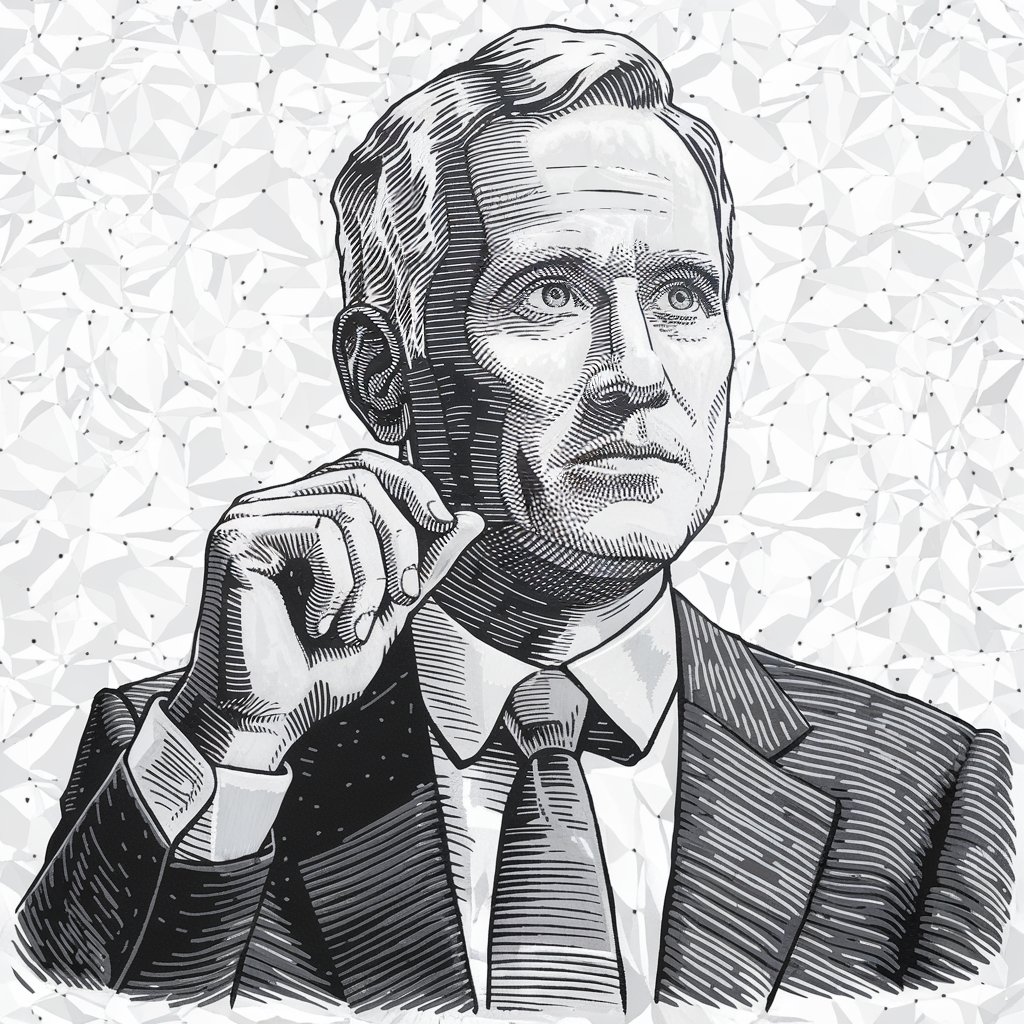
Different times, but the same mistakes.
In 1929
, just before the Great Depression, Post Cereal cut all expenses and advertising.
Their competitor, Kellogg’s, doubled their ad budget. By 1933, Kellogg’s profits had risen almost 30% and they became the industry leader – a position they’ve maintained for 90 years.1
Post’s decision is understandable; after all, they did what most businesses do during economic downturns — cut costs across the board, especially in advertising. Kellogg’s, however, doubled its advertising budget and aggressively promoted their then-new cereal, Rice Krispies.
This historical account, though from a different era, offers a crucial lesson: periods of profound uncertainty often demand counter-intuitive leadership. Just as Post and Kellogg faced a choice between retrenchment and investment, today’s leaders grapple with similar crossroads amidst persistent inflation, geopolitical tensions, and rapid technological disruption. We might instinctively cut costs to preserve capital, or strategically invest to capture emerging opportunities. We could pull back to weather the storm, or push forward to gain market share.
Recent surveys show CEOs expressing increasing levels of concern about economic uncertainty.2 Many of us are grappling with difficult decisions about staffing, technology investments, and growth initiatives — all while trying to maintain profitability and shareholder confidence.
Yet history suggests that times of uncertainty, while challenging, can also be periods of opportunity for companies with the right strategy and courage to execute it. We face a confluence of challenges: rapid technological change, economic instability, and shifting workforce dynamics. While uncertainty has always been part of business, the pace and scale of current disruptions often require a different approach to leadership.
Risk-taking is consistently reported as one of the hardest facets for leaders to enact within organizations. 3 In fact, according to the Harvard Business Review, 70% of all change initiatives fail. (Courtney et al.). In times like these, our perception of what constitutes an unacceptable risk can shift such that we not only avoid radical changes, but even small improvements. Worse still, as with the example of Post and Kellogg at the outset, some organizations actually backslide, eliminating prior positive changes.
The key to bridging this divide lies not in traditional command-and-control leadership, but in developing new capabilities around adaptability, emotional intelligence, and strategic foresight. In this series, we’ll explore practical frameworks for leading through uncertainty, drawing on real-world examples and research to provide practical insights for modern leaders.
Adapting to Technical Change

Do you feel confident dealing with technical change?
When Adobe announced its ill-fated $20 billion acquisition of Figma in 2022, the move signaled a fundamental shift in how software is developed and deployed, rather than merely an attempt to acquire a design tool. This deal highlighted how quickly technical change can upend even well-established market leaders.
The business environment for CEOs across industries is being reshaped by this pace of technical change. While technology has long been important to business success, leaders now face a more complex challenge: adapting to technical changes that are both faster and more fundamental than ever before.
Technology investment, we find, is not the sole differentiator; rather, it is how we approach technical adaptation itself. Successful companies treat technical change not as a series of discrete projects, but as an ongoing process requiring continuous evaluation and adjustment.
Consider payments processing; traditional financial institutions watched as companies like Square and Stripe upended merchant services through superior technical architecture. Those banks that recognized and responded to the technical threat early maintained market share. Those that didn’t lost significant ground.
The implications for CEOs are clear: technical adaptation can no longer be delegated exclusively to IT departments or chief technology officers. We must develop enough technical fluency to evaluate strategic implications of technical changes and guide our organizations’ responses.
Success in uncertain times increasingly depends on effectively navigating these fundamental aspects; let’s delve into a few details.
Leading with Technical Tenacity
Salesforce went down in May 2023
. When that happened, thousands of companies lost access to their customer data. The outage lasted hours. Many businesses couldn’t close deals or help clients.
This points to a broader truth about modern software: speed and control still matter. While cloud solutions promise convenience, companies with well-built on-premise systems often see better results. Their systems run faster. Their data stays safer. Their teams work without breaks.
Speed significantly influences how people interact with software. For instance, a CRM that responds in under half a second often sees considerably more usage than one that takes two seconds. This responsiveness encourages teams to enter more data, check records more frequently, and ultimately close more deals, as every click counts.
On-premise systems bring other gains. When the internet fails, work continues. When suppliers raise prices, budgets stay stable. When regulations change, data stays where companies put it.
These benefits, we find, tend to compound over time. Teams that trust their tools, for example, use them more extensively. This increased usage often leads to better data, which in turn facilitates more informed choices. Furthermore, faster systems save time, an advantage that compounds significantly across hundreds of users.
The math makes sense for large teams. While cloud CRMs cost less to start, high-performing on-premise systems often cost less at scale. They also give companies full control over their most vital asset: customer data.
The optimal choice is not always immediately apparent, as both approaches can be effective depending on specific organizational needs. However, companies prioritizing speed, stability, and control often find that managing their own systems yields significant long-term advantages, exchanging immediate convenience for enduring resilience.
Leading Through Supply Chain Issues
Toyota’s factories ground
to a halt in August 2021. The cause was not a major disaster or strike, but rather a single Covid case at a wire harness plant in Vietnam. This shutdown highlighted the brittleness of modern supply chains. Toyota was not alone; research indicates that the COVID-19 pandemic revealed most companies were unprepared for global health emergencies. ((Kraus, S.; Clauss, T.; Breier, M.; Gast, J.; Zardini, A.; Tiberius, V. The economics of COVID-19: Initial empirical evidence on how family firms in five European countries cope with the corona crisis. Int. J. Entrep. Behav. Res. 2020, 214, 26.))
Software companies, too, face similar risks. Their supply chains may be digital, yet the dependencies are equally profound. A single critical package update or API change, for instance, can ripple through an entire system. The growing mesh of third-party services, open source libraries, and cloud providers, moreover, often creates hidden weaknesses.
Recent data shows that over 80% of software projects depend on code they don’t control. The average web application pulls from over 100 external sources and, no doubt, climbing rapidly. Each connection adds risk.
Smart leaders are rethinking these bonds. They map their dependencies and rank them by risk. They build slack into their systems. Some keep copies of critical code. Others spread work across providers. The goal isn’t to cut ties, but to make them stronger.
Netflix learned this lesson early. They built tools to break their own systems on purpose. Their “chaos engineering” approach finds weak spots before real outages hit. When Amazon’s cloud went down in 2011, Netflix kept running.
The same thinking applies to talent pipelines. Teams that rely on rare skills or single experts run risks. Cross-training helps. So does picking technology that more developers know. The best leaders build deep benches.
Supply chains work best when you can see them clearly. Good tools track dependencies automatically. They warn about risks early. They help teams respond fast when things break.
The future belongs to companies that build strong, clear chains. They don’t just react to breaks — they prevent them. They turn supply chain thinking from a weakness into strength.
Leading Through Generational Changes

Navigating generational shifts in the workplace.
Take a hypothetical software engineer
, John D. Boomer; he started coding in the 1980s writing software on a mainframe using COBOL. Last week, he watched his new hire, Jonny Gen Z, generate Python code using ChatGPT. This fictional incident highlights a very real truth — the gap between these two moments spans more than time, but is a very real gap in attitudes, skills, and worldview.
Technology firms now often employ four generations of workers, from Boomers to Gen Z. Each group brings its own distinct views about work, communication, and technology. These differences, we find, create both tension and opportunity.
Consider how teams share knowledge. Older workers might write detailed documentation, drawing on years of experience with complex systems. Younger developers often prefer to learn through video tutorials or by asking AI tools for help. Both approaches work. Neither is wrong.
The clash shows up in code reviews too. Senior developers who learned to husband computing resources still look for performance bottlenecks. New graduates who grew up with cheap cloud services focus more on readability and maintainability. The best teams find ways to value both perspectives.
Financial opionions differ too. Veterans who remember the dot-com crash often push for careful spending and stable architecture. Recent grads who’ve only known the startup boom may prefer to move fast and fix things later. Smart leaders help these groups understand each other’s fears and hopes.
Communication styles vary with age. Older workers tend to write longer emails and expect formal meetings. Younger ones use chat and quick video calls. Good teams learn to mix these approaches based on the task at hand.
The crucial element lies in fostering collaboration rather than division. Teams that integrate experienced perspectives with fresh thinking tend to develop superior software, balancing meticulous planning with agile experimentation and proven methodologies with innovative tools.
Success requires giving each group room to shine. Let senior developers mentor others in system design. Let younger ones lead exploration of new technologies. Create chances for everyone to both teach and learn.
The future belongs to teams that turn generational differences into strength. The best software comes from mixing old wisdom with new ideas. That takes work, but the results are worth it.
Leading Through Uncertainty: The Path Forward
Kellogg, by doubling down during the Depression, provided a compelling historical example: uncertainty, we observe, can indeed breed opportunity.
This fundamental principle remains relevant.
Recent market shifts have exposed weak spots in how we build and run software companies. Supply chains break. Teams drift apart. Technology changes faster than plans.
Yet some companies thrive in this mess; they turn breaks into bridges, gaps into bonds, and challenges into changes. Breaks in the supply chain become chances to build stronger infrastructure. Gaps between departments, between generations, and between teams become chances for learning and growth. Instead of letting technical change shape their future, they choose to shape the future of technical change.
The path forward lies in seeing uncertainty not as a threat, but as a force for growth. Companies that learn to bend with change often last longer than those that try to stand rigid. Their systems are not stagnant, but shift and grow. They have teams that blend wisdom of age and the innovation of youth.
Just as Kellogg’s capitalized on market shifts in the cereal industry, astute software companies now seize opportunities their rivals overlook. They hire when others cut back, and they build when others hesitate. While a storm may be present, the strategic choices we make during such periods often shape decades ahead — and, of course, storms always pass.
The future belongs to those who confront uncertainty directly. They do not merely seek to endure it; they leverage it to cultivate greater strength.
Footnotes:
You may also like...
Physical Marketing in a Virtual World
An analysis of why physical marketing materials remain effective despite digital dominance, exploring the psychology of tangible interactions and strategies for integrating physical and digital channels.
The Importance of Locking Gem Versions in Ruby Projects
Learn why locking gem versions is crucial for Ruby application stability and how to use the lock-gemfile tool to prevent dependency conflicts and deployment surprises.
Subpixels and You
Exploring how Super Mario Brothers used subpixel calculations despite tight resource constraints to perfect game movement, and what modern developers can learn about prioritizing what truly matters in software design.

